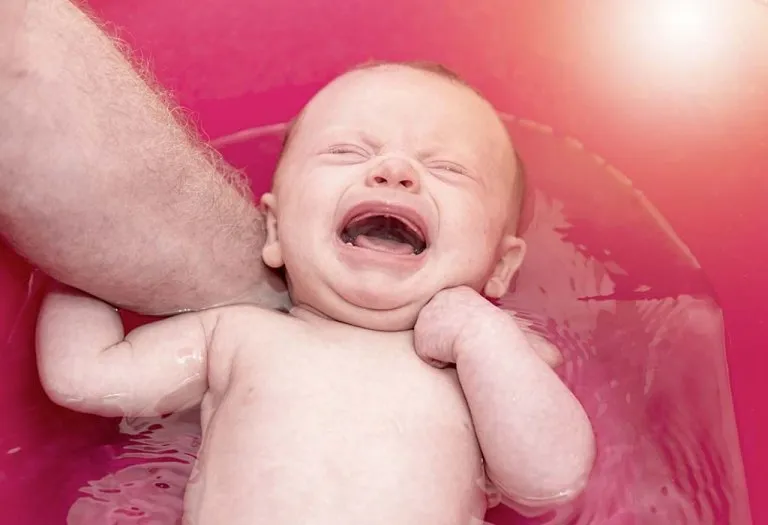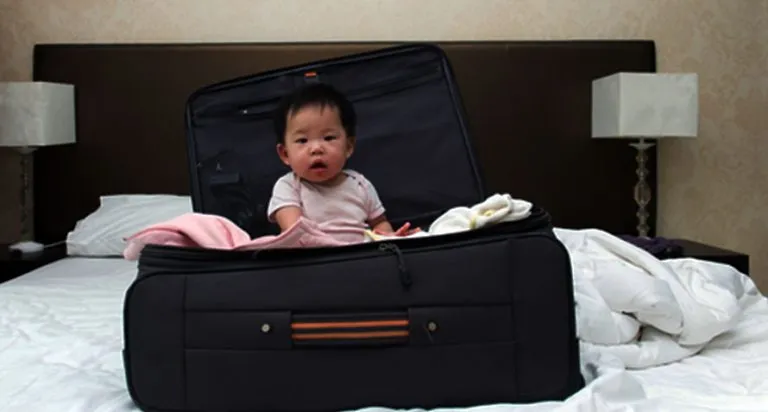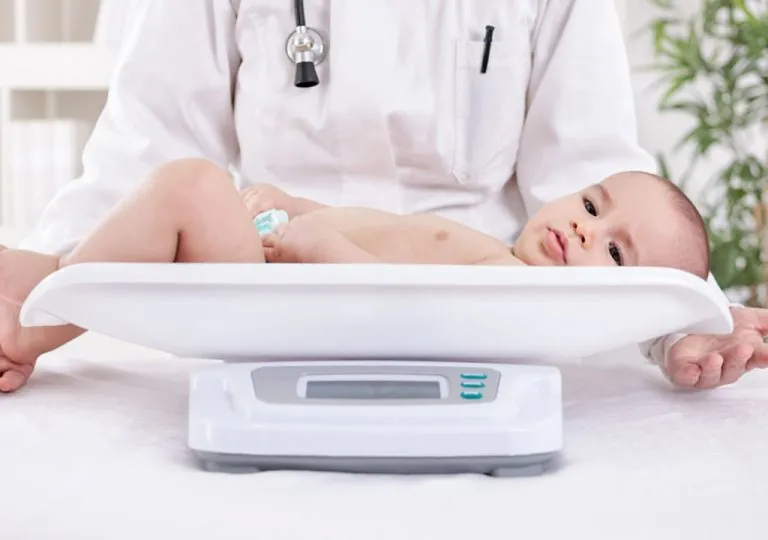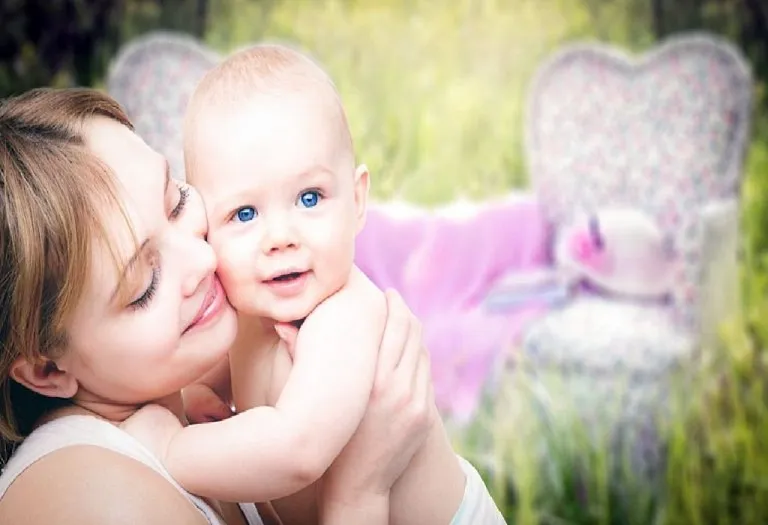Baby Crying While Bathing – Know Why Your Child Hates Bath-Time

If your baby cries a lot during bath, this one’s for you. Bathing your baby is not just about meeting hygiene needs; it’s an opportunity for relaxation and comfort. Despite its benefits, some babies may not always enjoy bath time, leading to resistance and tears. Understanding why your baby might be upset during baths can help address the issue effectively. Factors such as water temperature, discomfort from skin conditions, fear of water, or simply being overtired can contribute to their reluctance. By addressing these concerns you can make bath time a more enjoyable experience for both you and your baby. Read on if your newborn hates bath!
Why Babies Cry During a Bath and What You Can Do About It?
If you are wondering why a newborn hates having a bath, the following are the reasons why your baby might not be comfortable getting into the water and the solution to change this situation:
1. The Flow of Water Into the Eyes
Toddlers are not savvy with the concept of shutting their eyelids as a reflex to avoid foreign bodies from getting into the eyes. The continuous flow of water can be an irritant and make the baby cry.
What Can You Do?
Use a head visor to protect the eyes and avoid pouring too much water on the face.
2. Rashes or Sores That Burn
If your baby is suffering from rashes or sores, contact with water and soap can alleviate the burning sensation and can sting, resulting in discomfort to the child.
What You Can Do?
Avoid applying soap and excessive water on affected areas and wait until the rashes subside, to begin a full bathing regime.
3. Uncomfortable Water Temperature
Perhaps this is the most common reason why toddlers hate bath-time. Newborns are highly sensitive to change in temperature and water that is too cold or too hot can make them instantly uncomfortable. Body temperature, which is around 37 degree Celsius is the best temperature to bathe your baby.
What Can You Do?
Check the temperature of the water by using your elbow or use a thermometer to have an accurate reading. Dip your baby slowly into the water to allow them to get used to it.
4. Hunger
Hunger could be another reason for your baby to cry while bathing. If your baby is not properly fed, he is likely to get irritated, especially while bathing.
What Can You Do?
It is essential to feed the baby and wait for 30 minutes to 45 minutes before giving him to a bath to allow the food to get digested.
5. Fear of Soap
Selecting the right soap for your toddler is crucial. Soaps might cause skin irritation, or the child might have a fear of soap entering his eyes and creating a burning sensation.
What Can You Do?
Consulting a doctor is the best way to assess your little one’s skin type and the soap that will be most suited for the same. Use soaps and shampoos specially made for toddlers and avoid using those made for adults.
6. Baby is Already Tired
While bathing is supposed to relax the child, it might be counter-productive if the kid is already too tired and ready to sleep, especially if the bath routine is just before bedtime.
What Can You Do?
Try to advance the bathing routine to a little before the usual bed-time. This will not disturb your baby’s sleeping routine.
7. Unaccustomed to Water
Everything is a first time experience for a newborn and bathing is no different. The feel of water touching the skin might make the baby uncomfortable.
What Can You Do?
Get the baby used to water by starting with sponge baths and slowly progressing to regular bathing schedule.
8. Uncomfortable Bathing Area
Things which might seem immaterial to us can be a cause of concern for the babies. The temperature of your hand when you hold the baby, the room temperature in the bathroom, and the presence of dust, and allergens in the bathing area can all lead to the baby getting irritated and in turn starting to hate bath time.
What Can You Do?
Ensure that the bathing area is warm and free of dust. Make sure to warm your hands before holding the baby.
Nothing trumps the comfort and safety of your child. It is, therefore, critical to be cautious and sensitive towards the baby while bathing. Like all other things, your child will get used to this slowly and, hence, sufficient time should be given to the baby before getting too anxious about their reaction to water.
9. Overstimulation
Sometimes, the sensory experience of bathing can be overwhelming for babies, especially if there are too many toys, loud noises, or bright lights in the bathing area. This overstimulation can lead to discomfort and crying.
What Can You Do?
Create a calm and soothing bathing environment by minimizing distractions. Dim the lights, reduce noise, and limit the number of toys to create a more peaceful experience for your baby.
10. Separation Anxiety
Babies may cry during bath time due to separation anxiety, especially if they are used to being held or constantly in close contact with their caregivers. The act of being placed in a tub of water away from their caregiver can trigger distress.
What Can You Do?
Offer reassurance and comfort throughout the bath by maintaining eye contact, talking softly, and occasionally touching your baby to let them know you are still there. Gradually increase the distance between you and your baby during baths to help them become more accustomed to being alone briefly.
What Are Some Ways to Help Babies Enjoy their Bath Time?
Bath time can be a delightful experience for both babies and parents when approached with the right strategies. By creating a soothing and enjoyable environment, addressing potential triggers of discomfort, and incorporating fun activities, you can help your baby look forward to bath time with excitement.
1. Establish a Consistent Routine
Set a regular bath time schedule so that your baby knows what to expect. Consistency helps create a sense of security and predictability, making bath time more enjoyable.
2. Use Comfortable Water Temperature
Ensure the water is comfortably warm, around 37 degrees Celsius, to prevent discomfort. Test the temperature with your elbow or a thermometer before bathing your baby (1).
3. Create a Relaxing Atmosphere
Dim the lights, play soft music, and use gentle, calming voices to create a peaceful environment that promotes relaxation during bath time.
4. Choose Gentle Bath Products
Opt for mild, hypoallergenic baby soap and shampoo to avoid skin irritation. Choose products specifically formulated for babies to ensure they are gentle on their delicate skin.
5. Introduce Fun Bath Toys
Engage your baby with colorful bath toys to make bath time more enjoyable and stimulating. Floating toys, squirters, and rubber ducks can capture their attention and distract from any discomfort.
6. Sing or Talk to Your Baby
Keep your baby entertained and engaged by singing songs, reciting nursery rhymes, or simply talking to them during bath time. Your soothing voice can help calm any anxiety or apprehension they may feel.
7. Incorporate Baby Massage
Gently massage your baby with baby-safe lotion or oil during bath time to promote relaxation and bonding. Massage can also help soothe any tension or discomfort.
8. Use a Supportive Bathing Aid
Invest in a baby bathtub or bath seat that provides adequate support and comfort for your baby during bath time. A secure bathing aid can help your baby feel more at ease in the water (2).
9. Be Gentle and Reassuring
Handle your baby with care and gentleness during bath time, reassuring them with comforting touches and soft words. Your loving presence can help alleviate any fears or anxieties they may have.
10. End on a Positive Note
Finish bath time with a warm, cuddly towel wrap and plenty of hugs and kisses. Ending on a positive note reinforces the idea that bath time is a pleasant experience.
Tips for Making Bathtime Fun for Babies
Bathtime can be transformed from a routine chore into an exciting and enjoyable experience for babies with these simple tips and tricks:
- Introduce vibrant and interactive bath toys to capture your baby’s attention and stimulate their senses during bathtime.
- Explore gentle water games such as pouring water from cups or containers, creating ripples, or splashing gently to make bathtime more entertaining.
- Singing fun and lively bathtime songs can add an element of joy and excitement to the bathing routine, turning it into a playful and interactive experience.
- Blow bubbles or use a baby-friendly bubble bath to create a magical and enchanting atmosphere in the bath, encouraging your baby to reach out and explore.
FAQs
1. Why does my baby cry every time I try to bathe them?
Babies may cry during bath time for various reasons, including discomfort from water temperature, fear of soap or water getting into their eyes, or feeling overstimulated by the sensory experience. Identifying the specific trigger can help address the issue effectively.
2. How can I make bath time less stressful for my baby?
To make bath time less stressful for your baby, ensure the water temperature is comfortable, use gentle bath products, create a calming atmosphere with soft lighting and soothing music, and engage your baby with fun activities and toys. Consistency and reassurance also play a key role in easing their anxiety.
3. Is it normal for babies to hate bath time?
It’s not uncommon for babies to go through phases where they dislike bath time. Understanding and addressing the reasons behind their aversion can help improve their experience. With patience, consistency, and positive reinforcement, many babies eventually come to enjoy bath time as a relaxing and enjoyable routine.
However, if the baby continues to remain defiant during bath time, it is best to consult a doctor on possible reasons for the reaction and the most viable solution for the same.
Infographics: 6 Reasons Why Baby Cries While Bathing
References/Resources:
1. Caring for Our Children: National Health and Safety Performance Standards Guidelines for Early Care and Education Programs; American Academy of Pediatrics; https://nrckids.org/files/CFOC4%20pdf-%20FINAL.pdf
2. Bathing and Skin Care for the Newborn; University of Rochester Medical Center; https://www.urmc.rochester.edu/encyclopedia/content.aspx?contenttypeid=90&contentid=P02628
3. Infant Water Safety: Protect Your New Baby from Drowning; American Academy of Pediatrics; https://www.healthychildren.org/English/safety-prevention/at-play/Pages/Infant-Water-Safety.aspx
4. Bathing Your Baby; American Academy of Pediatrics; https://www.healthychildren.org/English/ages-stages/baby/bathing-skin-care/Pages/Bathing-Your-Newborn.aspx
5. Washing and bathing your baby; NHS; https://www.nhs.uk/conditions/baby/caring-for-a-newborn/washing-and-bathing-your-baby/
6. How to Bathe Your Newborn; American Academy of Dermatology Association; https://www.aad.org/public/everyday-care/skin-care-basics/care/newborn-bathing
7. Bathing Your Baby; Nationwide Children’s Hospital; https://www.nationwidechildrens.org/family-resources-education/health-wellness-and-safety-resources/helping-hands/bathing-your-baby
Also Read:
Reasons for Baby’s Fear during Bath Time
How to Manage Fake Crying in Infants?
How Often Should You Bathe a Baby?
Sponge Bath vs. Tub Bath for Your Baby
Is Co-Bathing With Your Baby Safe?
Was This Article Helpful?
Parenting is a huge responsibility, for you as a caregiver, but also for us as a parenting content platform. We understand that and take our responsibility of creating credible content seriously. FirstCry Parenting articles are written and published only after extensive research using factually sound references to deliver quality content that is accurate, validated by experts, and completely reliable. To understand how we go about creating content that is credible, read our editorial policy here.
























